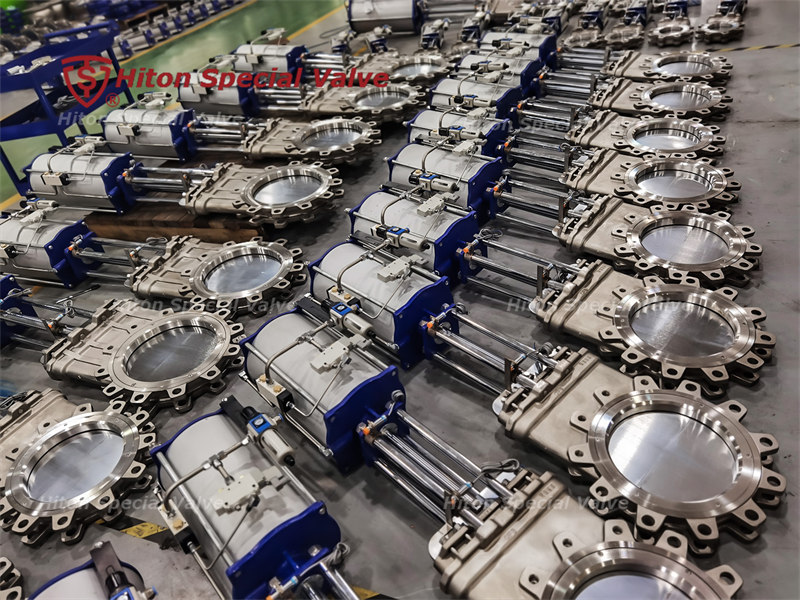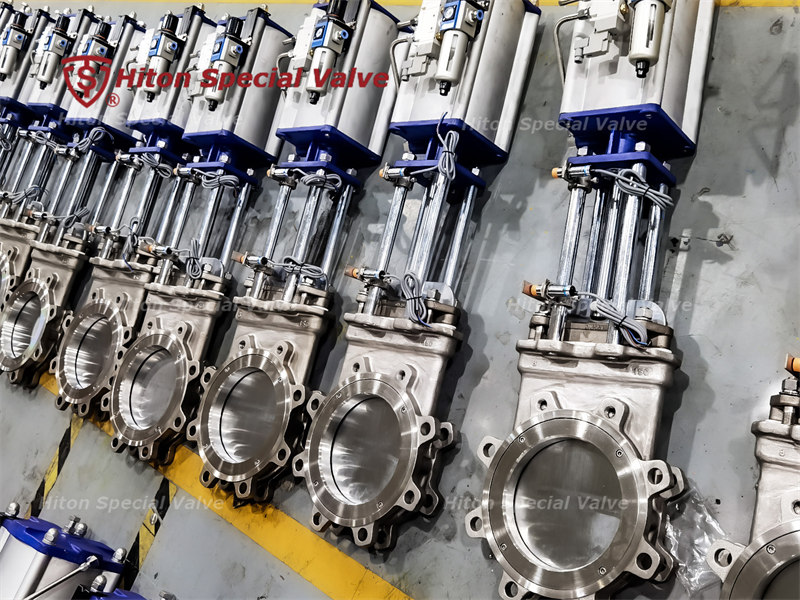Pneumatic knife gate valves are valves controlled by a pneumatic actuator, typically used in specific applications where fluid flow control with particular characteristics is required.
Here are the main application scenarios for pneumatic knife gate valves:
1. Wastewater Treatment: Pneumatic knife gate valves are commonly used in wastewater treatment plants and sewage pipeline systems to control the flow of sewage. Their design allows them to handle fluid with solid particles, making them highly effective in these applications.2. Paper Industry: In the paper industry, pneumatic knife gate valves are often used to control the flow of pulp and wastewater. They can handle high concentrations of suspended solids, helping to maintain process stability.
3. Chemical Industry: In the chemical industry, pneumatic knife gate valves are typically used to handle chemicals with corrosive or hazardous properties. Their sealing and corrosion resistance make them a suitable choice.
4. Mining Industry: Pneumatic knife gate valves are used to control the flow of ore, tailings, and slurry, particularly in the mining and smelting processes.

6. Waste Management: In waste management and waste treatment industries, pneumatic knife gate valves are used to control the flow of waste, including solid waste, wastewater, and hazardous waste.
7. Slag Handling: In steel manufacturing and smelting processes, pneumatic knife gate valves are used to control the flow and discharge of slag.
8. Power Industry: In power plants and the power industry, pneumatic knife gate valves can be used to control the flow of cooling water, wastewater, and other fluids.

In summary, pneumatic knife gate valves are primarily used in applications where handling viscous fluids, suspended solid particles, corrosive media, or high-pressure conditions is required. They are commonly employed in industrial and processing fields to ensure the reliability, safety, and efficiency of processes. When selecting pneumatic knife gate valves, considerations should include the nature of the fluid, pressure requirements, temperature requirements, and any specific environmental factors.


















